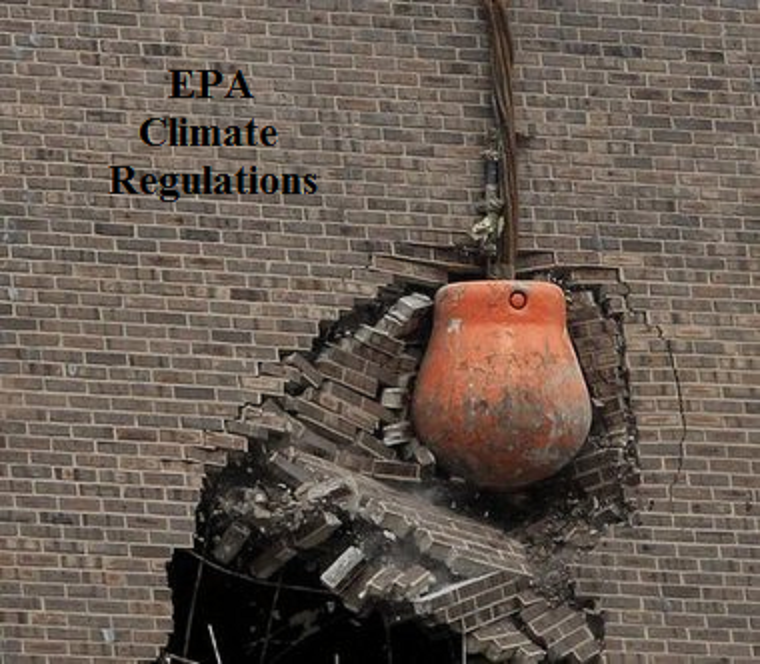 Background from Reed Smith lawyers The fall of Trump’s Affordable Clean Energy Rule and the strengthened EPA authority to regulate greenhouse gases. Excerpts in italics with my bolds
Background from Reed Smith lawyers The fall of Trump’s Affordable Clean Energy Rule and the strengthened EPA authority to regulate greenhouse gases. Excerpts in italics with my bolds
The Affordable Clean Energy Rule
The EPA promulgated the ACE Rule in 2019 under the CAA, replacing the Obama administration’s 2015 Clean Power Plan (CPP). Both rules sought to reduce GHG emissions from the power sector; but where the CPP implemented broader industry-wide mechanisms, the ACE Rule limited reduction efforts to the actual source power plants.
The 2015 CPP offered “beyond the fenceline” tools for states to reduce emissions by replacing fossil fuels with renewable energy sources and participating in emissions credit-trading programs; however, in February 2016 the U.S. Supreme Court stayed the implementation of the CPP pending litigation in the D.C. Circuit. During the stay and subsequent freeze of litigation, the Trump administration rescinded the CPP and promulgated the ACE Rule.
In promulgating the ACE Rule, the Trump EPA took an alternative view of the CAA than the Obama EPA and reasoned that the CAA expressly limited the EPA’s power to only “at the source” emissions reduction options, such as heat rate improvement technologies. As a result, the Trump administration removed all of the CPP’s “beyond the fenceline” options and limited emissions restrictions to those applied directly to power plants.
DC Circuit Court of Appeal Ruling January 19, 2021
Judges Millett and Pillard of the D.C. Circuit Court disagreed with the (Trump) EPA’s interpretation. In the majority opinion, the Court concluded that there is “no bases—grammatical, contextual, or otherwise—for the EPA’s assertion” that its authority was limited to “at the source” controls. In the end, the Court vacated the ACE Rule and remanded it back to the EPA just in time for the Biden administration to take over. The Court’s decision appears to clear the way for the Biden administration to regulate GHG emissions from the power sector.
In his first week in office, President Biden has taken a number of actions to undo many of the Trump administration’s environmental policy decisions, including rejoining the Paris Climate Accord. The new Biden EPA has also requested that the Department of Justice have all Trump-era litigation seeking judicial review of any EPA regulation promulgated between January 20, 2017 and January 20, 2021. Based on the Court’s show of support and the Biden Administration’s actions within the first week, we may see some of the Obama-era or similar regulation brought back to life in the coming months.
Petitions to Supreme Court April 29 and 30, 2021
The May Update at Columbia Climate Law Blog reports the latest development bringing the issue to Supreme Court attention: States and Coal Company Sought Review of D.C. Circuit Decision Vacating Affordable Clean Energy Rule Excerpts in italics with my bolds.
Two petitions for writ of certiorari were filed in the U.S. Supreme Court seeking review of the D.C. Circuit’s January opinion vacating EPA’s repeal and replacement of the Obama administration’s Clean Power Plan regulations for controlling carbon emissions from existing power plants. The first petition was filed by West Virginia and 18 other states that had intervened to defend the repeal and replacement rule, known as the Affordable Clean Energy rule. The states’ petition presented the question of whether Section 111(d) of the Clean Air Act constitutionally authorizes EPA “to issue significant rules—including those capable of reshaping the nation’s electricity grids and unilaterally decarbonizing virtually any sector of the economy—without any limits on what the agency can require so long as it considers cost, nonair impacts, and energy requirements.” They argued that Congress had not clearly authorized EPA to exercise such “expansive” powers and that the D.C. Circuit majority opinion’s interpretation was foreclosed by the statute and violated separation of powers. The states argued that the Supreme Court’s stay of the Clean Power Plan while it was under review by the D.C. Circuit in 2016 signaled that the legal framework for the Clean Power Plan “hinges on important issues of federal that EPA then—and the court below now—got so wrong this Court was likely to grant review.” The states contended that further delay in the Court’s resolution of these “weighty issues” would have “serious and far-reaching costs.”
The second petition was filed by a coal mining company. The coal company’s petition presented the question of whether Section 111(d) “grants the EPA authority not only to impose standards based on technology and methods that can be applied at and achieved by that existing source, but also allows the agency to develop industry-wide systems like cap-and-trade regimes.” The company argued that the D.C. Circuit erred by “untethering” Section 111(d) standards from the existing source being regulated. Like the states, the company contended that Supreme Court had already recognized the critical importance of this question when it stayed the Clean Power Plan.
The company argued that debates regarding climate change and policies to address climate change “will not be resolved anytime soon” but that “what must be resolved as soon as possible is who has the authority to decide those issues on an industry-wide scale—Congress or the EPA.”
EPA’s response to the petitions is due June 3, 2021. West Virginia v. EPA, No. 20-1530 (U.S. Apr. 29, 2021); North American Coal Corp. v. EPA, No. 20-1531 (U.S. Apr. 30, 2021).
Comment: The question of decision authority seems especially urgent since no one knows who is the actual decider for the Executive Branch.